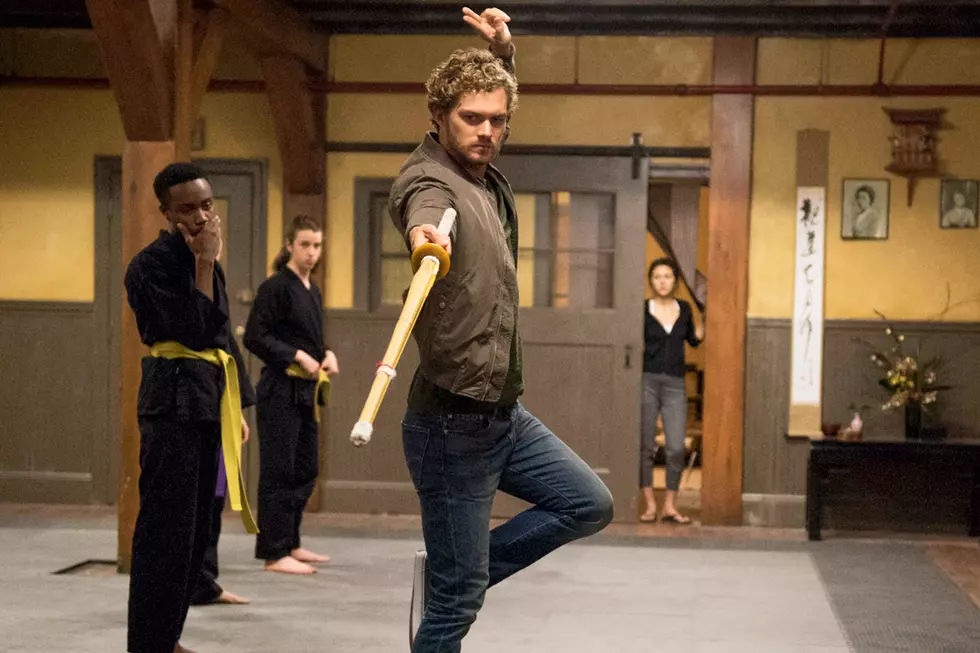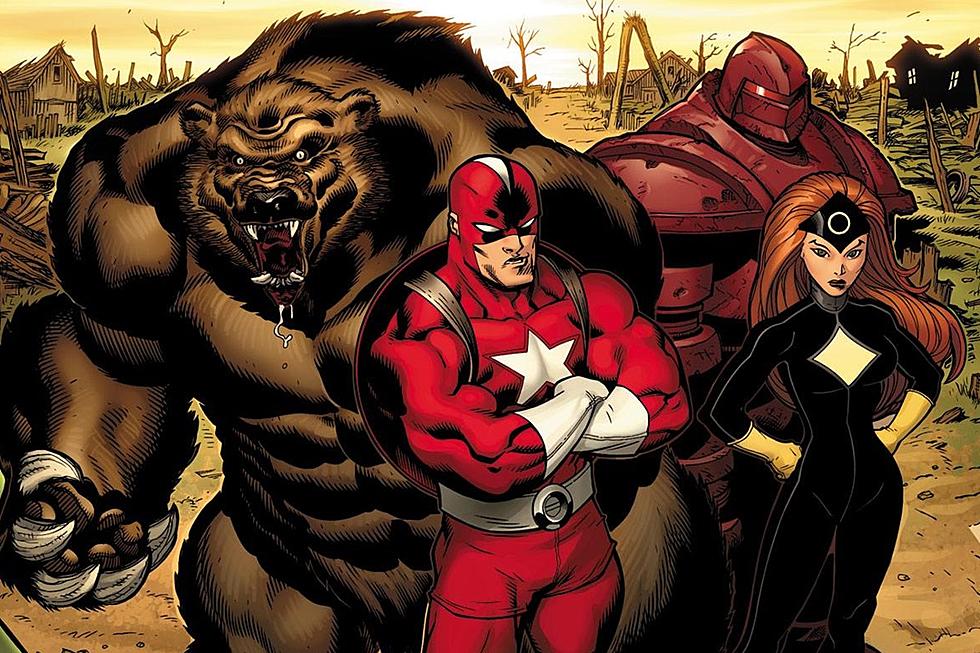
Making History All His Own: Celebrating the Great Roy Thomas!
Dedicated fan, influential creator, esteemed editor, respected historian; the legendary Roy Thomas, born November 22, 1940, has assembled one of the comics medium's most diverse and wide-ranging resumes over the course of his six-decade-plus career. From helping to establish the groundwork for organized comic fandom in the early '60s, to his much-loved stints writing many of Marvel and DC's best-beloved characters, to his modern-day work as editor and author of numerous reference works, he's long been one of the most knowledgeable and passionate voices in the industry.
From his earliest years growing up in Jackson, Missouri, Roy Thomas exhibited a great love for comics, reading every title he could get his hands on, and creating his own stories that he distributed to friends and family. He graduated from Southeast Missouri State in 1961 with a degree in education and worked for a few years as a high school English teacher while becoming deeply involved in the nascent fandom scene, forming friendships with some of the movement's most prominent figures, having letters published in various Marvel and DC titles, and contributing to fanzines, including Jerry Bails' seminal Alter Ego.
In 1964, he took over as Alter Ego's publisher, and in 1965, moved from Missouri to New York to take a job at DC Comics as an assistant to notoriously temperamental editor Mort Weisenger. After two short and unhappy weeks in that position, he reached out to Stan Lee, and almost immediately got a job writing and editing for Marvel.
Thomas' first Marvel assignment was dialoguing Millie The Model and Patsy Walker stories, and after handling a couple of Iron Man and Doctor Strange fill-ins, he moved over to Sgt. Fury And His Howling Commandos, becoming the title's regular scribe as of issue #29.
Shortly thereafter, he was given the reins of X-Men, which he would oversee for nearly two years, and Avengers, beginning as writer with December 1966's #35, and continuing until 1972's #104), while also continuing to contribute stories for the Hulk, Sub-Mariner, Doctor Strange, Nick Fury, Daredevil, and nearly every other major Marvel character.
His ear for dialogue, skill at structuring continuing storylines, and penchant for dramatic prose were well-suited for the tenor of the times, and soon, he was second only to Stan himself as the definitive voice of the company's line of titles. In 1968, he began writing the star-spanning hero Captain Marvel, establishing many elements of that character's backstory, and creating supporting characters including Air Force officer Carol Danvers, who would later adopt the mantle of Captain Marvel herself.
In 1969, after a short break from the title, Thomas returned to X-Men in an attempt to revitalize the floundering series, teaming with artist Neal Adams on a handful of issues that, while failing to drive up sales, would later go on to be recognized as classics.
In the meantime, his work on The Avengers with John Buscema drew raves from readers, introducing a host of new characters including The Vision, Ultron, and The Black Knight, and creating the sense that the team was an ever-evolving entity, constantly toying with the membership line-up and pitting them against ever-more powerful foes.
1970 saw a number of changes at Marvel, as the Silver Age waned and the Bronze Age beckoned. A new distribution deal allowed the publisher to expand its slate for the first time in a number of years, and amongst the new titles launched was one spearheaded by Thomas and artist Barry Smith, a series starring a little-known warrior created by pulp fantasy author Robert E. Howard.
Conan The Barbarian would go on to turn the industry upside-down, starring in spin-off titles, giving rise to a craze for all-things "sword-and-sorcery", inspiring innumerable imitations, and becoming one of the company's best-sellers over the new decade. Thomas would be the character's primary author for much of the next decade, working not just on the regular color comic, but also penning hundreds of Conan stories in Marvel's black-and-white Savage Tales and Savage Sword Of Conan magazines.
The next few years would prove to be similarly eventful for both the man and the company that employed him. Thomas expanded the scale of the Marvel Universe to a previously unimagined galactic level with the seminal "Kree-Skrull War" storyline in Avengers; he developed Adam Warlock into a major figure among Marvel's heroes, and co-created characters including Morbius, Man-Thing, Valkyrie, and Werewolf By Night; he launched The Defenders and Marvel Team-Up; and in 1972, he succeeded Stan Lee as Marvel's editor-in-chief, a position that he would hold for two years while continuing to write a variety of titles.
The remainder of Thomas' decade reads like a highlight reel: he contributed the original concept for Wolverine, who was then designed by John Romita Sr. and developed by Len Wein and Herb Trimpe; he co-created Iron Fist, Brother Voodoo, Ghost Rider, Son Of Satan, and Red Sonja; and he launched The Invaders, What If?, and a handful of other series.
Possibly most importantly, he was responsible for bringing Marvel the rights to produce comics based on a new swashbuckling sci-fi movie by up-and-coming director George Lucas. He would go on to write the script for Marvel's six-issue Star Wars adaptation, and then the first three follow-up issues of the ongoing series.
As the '80s dawned, Thomas chose to move on from the company where he'd made his reputation, and begin a new chapter working for DC Comics, where he immediately set to work writing Green Lantern, Legion Of Super-Heroes, Atari Force, and other series. He teamed with artist Scott Shaw to create the funny-animal superteam Captain Carrot And His Amazing Zoo Crew, launched the fantasy series Arak, Son Of Thunder and the retro-'40s JSA title All-Star Squadron.
In 1983, he and Jerry Ordway created the legacy supergroup Infinity Inc., who gained their own title in early 1984. During this time, he also collaborated with his friend and fellow comic-writer Gerry Conway on the screenplays for Conan The Destroyer, and Ralph Bakshi and Frank Frazetta's animated epic Fire And Ice.
Thomas returned to freelancing for Marvel by the late '80s, once again taking on a variety of assignments, including new stints on his signature characters Conan and The Avengers, and contributed scripts to DC, Topps Comics, Dark Horse, Dynamite, and other companies throughout the '90s and 2000s.
In 1997, he joined forces with TwoMorrows Publishing to relaunch Alter Ego as an ongoing magazine. In 2011, he was inducted into the Eisner Awards Hall Of Fame, and in the ensuing years, he continued to edit and oversee the revived Alter Ego, authored 2014's mammoth 75 Years Of Marvel volume for Taschen, and edited and annotated DC's series of "The War Years" hardcovers, reprinting WWII-era stories of Superman, Batman, and Wonder Woman.
In short, Roy Thomas has done practically everything over the course of his career, helping to preserve essential pieces of comic book history, while also developing the form in new and vital ways. He's one of comics' most prolific and versatile talents, and today, it's our great pleasure to celebrate his achievements and wish him the happiest of birthdays.
More From ComicsAlliance







![NECA’s Muhammad Ali vs Superman Captures the Greatest Fight of All Time Perfectly [Review]](http://townsquare.media/site/622/files/2017/03/IMG_2810.jpg?w=980&q=75)

